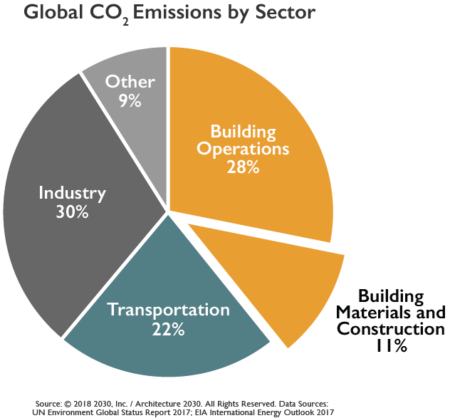This posting specifically talks about Canadian programs or the lack thereof to address global warming. Much of it, however, should be relevant to other jurisdictions. Where I talk about existing policies and programs, you can find if your governments are doing the same or something similar. The content came from a virtual meetup held yesterday here in Toronto where I serve as our parliamentary riding Policy Chair. I’d be interested in hearing from non-Canadian readers about what is happening in your countries to achieve net-zero emissions by mid-century.
How can Canadians or citizens from any country around the world become more involved in moving the planet closer to net-zero carbon emissions by mid-century? Here in Canada, the federal government set a 40-45% emission reduction target by 2030. To achieve this the government is escalating its price on carbon to make it more expensive when purchasing fuel at the pump. But what else can we do?
Three days ago the IEA, International Energy Agency, with 30 countries as members and with participation from industry and 8 associate country observers, provided a roadmap for the planet to get to net-zero emissions to limit global warming to 1.5 Celsius (2.4 Fahrenheit) by 2050. This is the first comprehensive look at how to effect the transition without compromising access to affordable energy, and without impacting economic growth.
The net-zero pathway calls for a global stop in investment in fossil fuel energy. It calls for governments to prioritize research and development in green technologies. And it calls for citizen participation to make the transition to net-zero successful. The IEA report, taking into consideration its purpose, heavily focuses on a green energy transition. But as citizens and consumers, our pathway to net-zero is not limited to tackling fossil fuel dependency.
So what can we do and what can we ask of our governments to help us achieve net-zero by 2050?
- We need the cooperation of all levels of government in Canada, and an effort to coordinate with our neighbour in the United States wouldn’t hurt if we are to create carbon emission labelling on all consumer products. Just as we have content and nutrition labelling on foods, supplements, and other consumer products we regularly buy, knowing the carbon contribution will help us to make better consumer choices. So let’s get labelling and measuring standards in place that look at products not just for their contents, but also for the carbon contribution that goes into sourcing materials, their transportation, storage, and distribution. That way consumers can make better carbon choices when shopping for food, construction materials for retrofitting homes, automobiles, appliances, etc. For example, not all bags of concrete or concrete blocks are the same when it comes to carbon contribution. Some concrete manufacturers are now sequestering carbon in their products to reduce their carbon footprint. But how would consumers know? Another example that may resonate with almost every homeowner. Have you made the switch away from incandescent to low-energy compact-fluorescent and LED lighting? We have been sold on the value of doing this even though the latter two are more expensive to purchase. The switch saves energy but does it reduce carbon emissions? If the electricity sourced to run the lights comes from thermal power plants then carbon reductions are much smaller than if the electricity source is green (hydro, solar, wind). In addition, consider in making the switch what we don’t know about the making of compact-fluorescent or LED lights, and the lifecycle of the products including disposal or recyclability. Is the carbon emission contribution less than the incandescent alternative? Without carbon labelling, how can consumers make better net-zero choices?
- We need to educate the public to understand carbon emissions. For example, what is the carbon footprint of the homes we live in? What is the carbon footprint of new construction? It’s not just materials that have to be factored in when trying to achieve net-zero. Getting emission reductions when looking at buildings requires us to look a the entire building envelope from the concrete to the bricks to the steel and wood. What is their material carbon contribution? And we have to look at the construction carbon footprint as well, the machinery used, the transportation of the materials, the choices made for windows, lighting, energy source for HVAC and, appliances. This all comes under the definition of embodied carbon. And we need building codes to reflect net-zero goals through this lens. Otherwise, the places in which we live will continue to be the second-largest contributor of emissions next to the search for, extraction, distribution and burning of energy in this country.
- Buildings in Canada generate between 30 and 40% of all of our carbon emissions when taking into consideration the embodied carbon, i.e., materials, processes and operations. Canada’s Green Building Council (GBC) modelled after a similar U.S. not-for-profit, has established LEED green building and WELL building standards aimed at eliminating carbon emissions. What seems to be missing from the GBC is standards to address building retrofits. For example, Toronto has more than 400,000 existing buildings of which 80% are two-storey or less. The vast majority are single-family, semi-detached, or townhomes not built to LEED, WELL or any other environmental standards that get us closer to net-zero. The building envelopes (bricks and concrete), windows, doors, lighting, and HVAC are older. For Canada to achieve net-zero, retrofitting these structures needs to be supported by government policy and programs. Then there is the challenge of the growing city that sees 100,000 new residents coming here annually which means occupying old and new construction of which neither subscribes to LEED or WELL standards. And finally, we have the COVID-19 pandemic that has emptied the city’s downtown towers of office staff with the majority of employees working from home. How much of this commercial building inventory will revert to offices in the future remains unknown. How much can be retrofitted for housing, and if so, what kinds of policies and programs can be put in place to accelerate conversions and ensure they meet net-zero emission construction standards?
- So what do we have currently from the Canadian federal government to support new and retrofit building projects? A current federal program focused on green infrastructure is accepting applications for retrofits and new building projects for community buildings from under $3 million to $25 million. It is a time-limited (July 6th application deadline) offer on construction of less than $3 million. For homeowners, assistance with energy retrofits was included in Budget 2021 with $778 million allocated to CMHC this year and $414 million in future years in the form of loans. The retrofits eligible would fit under EnerGuide assessment rules. It includes replacing oil or low-efficiency furnaces with high-efficiency alternatives, air or geothermal heat pumps. It covers insulation for basement, walls and roofs, high-efficiency water heaters, solar panels, windows and doors. Up to $40,000 of the loan is interest-free. Considering the inventory of older homes in the country and the 30% carbon emissions contribution from housing, buildings, and construction, these programs are insufficient. We propose that the government be prepared to invest more money and resources into home retrofits. We also propose that EnerGuide standards for assessing retrofits should be reviewed to ensure they meet net-zero emission objectives. And we propose that we mine the expertise of the Green Building Council to create new standards for home rehabilitation that meet the needs of our net-zero emission transition.








